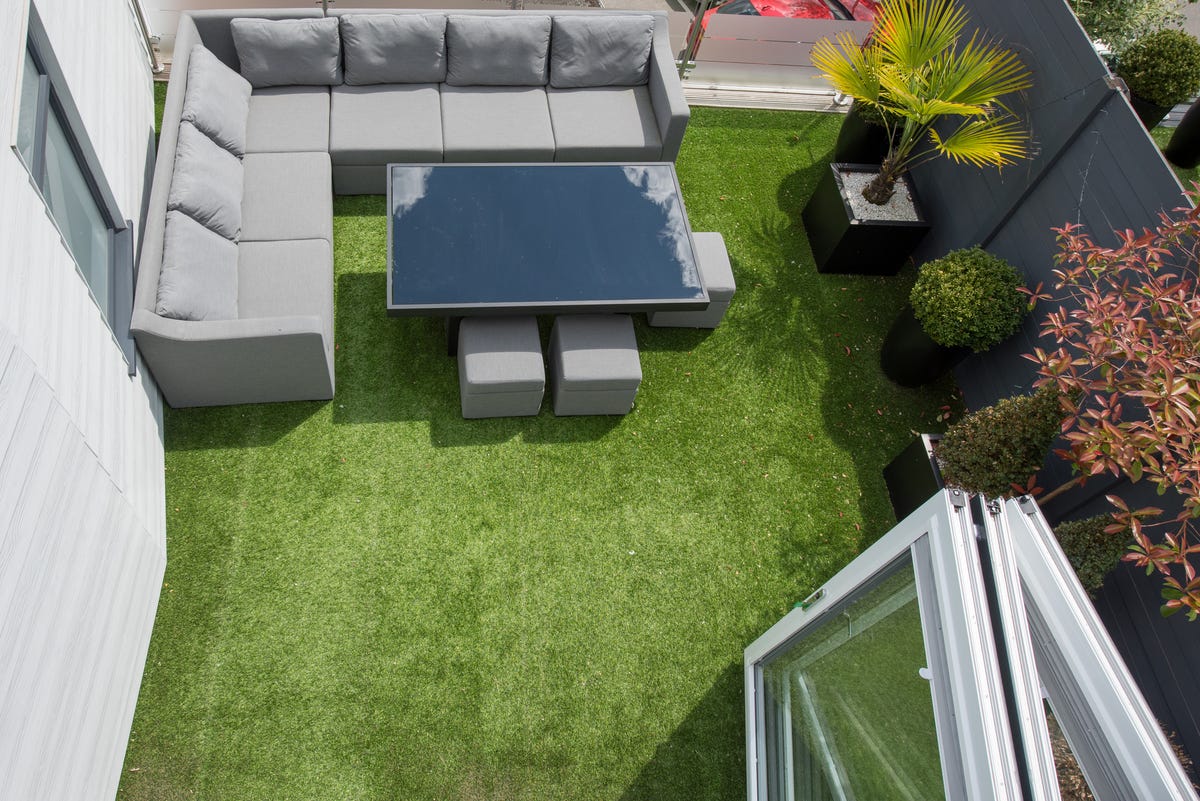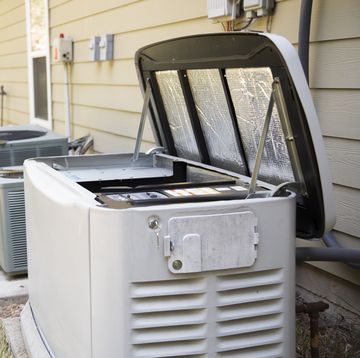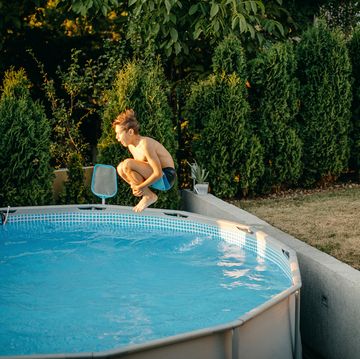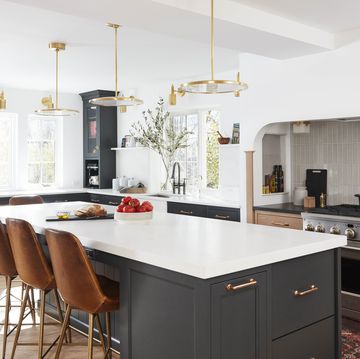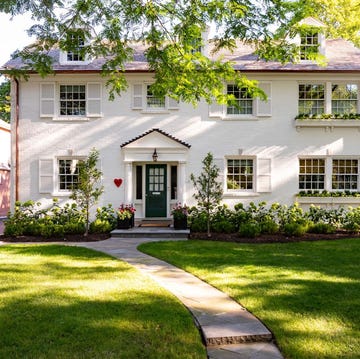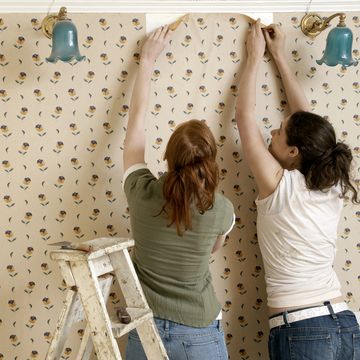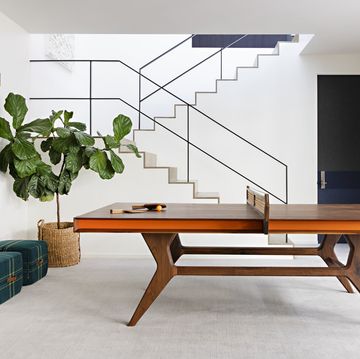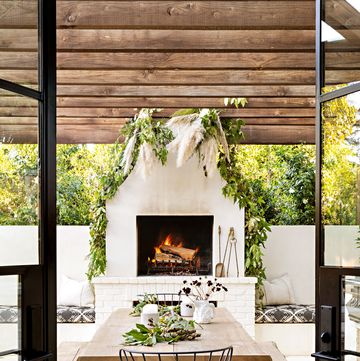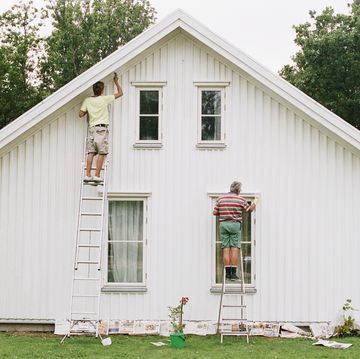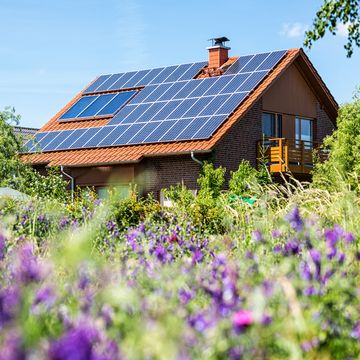If that patch of brown in your backyard needs attention or piques your interest in a DIY project, consider installing artificial grass, or "turf."
“For those looking to have a well-manicured lawn all year long with little maintenance, turf is a great choice,” says Cynthia Castillo, Stock Carpeting Merchant at The Home Depot. “Maintenance is very easy with artificial turf: you can use a blower to clear leaves and occasionally rinse with water to knock down dust, but usually, rainfall will be enough to keep your turf clean.”
If you have a small, shaded courtyard or backyard, consider artificial turf as most species of real grass do not thrive in shade,” also advises Stephen McFarlane, Regional Landscape Manager at Sandals Resorts International. And if you prefer an easy-to-keep landscape, artificial turf might be the solution. Read on for a guide to determining if artificial grass is right for you.
When should you use artificial grass at home?
“I recommend artificial grass for low maintenance: once installed, turf requires very little care,” advises Castillo. Some of the other benefits of artificial grass include no mowing (an eco-friendly move, considering gas-powered lawnmowers make up 5% of air pollution in the U.S.); saving water (artificial grass is easy to clean!); and it remains green year-round.
Have a pet that you’d like to let out into your backyard without worry? “I highly recommend Lifeproof with Petproof Technology Premium Pet Turf, which is made with high-performance yarn to look and feel just like real grass with a reduction in maintenance, even under heavy use,” says Castillo. This artificial grass includes “ultra-flo” backing, which provides durable backing against dogs digging and drains two times faster than the industry average, so liquid waste passes and will not puddle.
What is the process usually like for new installation?
Installing artificial turf yourself can be a fun and simple DIY project to tackle this summer. “Your first step would be to measure the length of your yard and multiply that by its width, which will tell you how much grass you need,” advises Castillo. Subsequent steps include removing existing grass and soil and installing bender boards and base materials, plus a weed-barrier cloth for larger installs and weed prone areas. When you are read to install the artificial grass, cut the turf to shape and install nails along the edges and seams using landscaping staples. Don’t forget to broom in infill, which are products placed in between the synthetic grass blades to help them stand up.
How do you decide which artificial turf is best for you?
Consider the application of your turf: Will it be installed in an area where lots of pets and kids play, a front yard with low traffic, or a backyard with high traffic? “A turf with “ultra-flo” backing and high-performance yarn is designed for dimensional stability, easy drainage, and heavy traffic from pets and kids,” says Castillo. “Second, determine what turf looks the most realistic and natural to you: pile height and blade design are important to the natural, realistic look of turf. While turf is designed to last for years of use, I recommend selecting a turf that comes with a longer warranty, at least eight years, to ensure coverage throughout the life of your artificial grass.”
When is it best to use real grass?
Depending on your lifestyle, location, and ability to maintain your lawn, real grass may be a better fit. “Consider who will be using the space,” advises McFarlane. “If children are going to be the biggest users of the space, you’ll likely want to consider real grass because artificial turf can produce surface temperatures that are near asphalt pavement in warm climates. Real grass is perfect for those who have an adequate water resource to maintain it and don’t mind mowing once in a while,” says McFarlane. The best person to install either real or artificial grass? A reputable, certified landscape contractor or specialized sod installation contractor.
Follow House Beautiful on Instagram.
